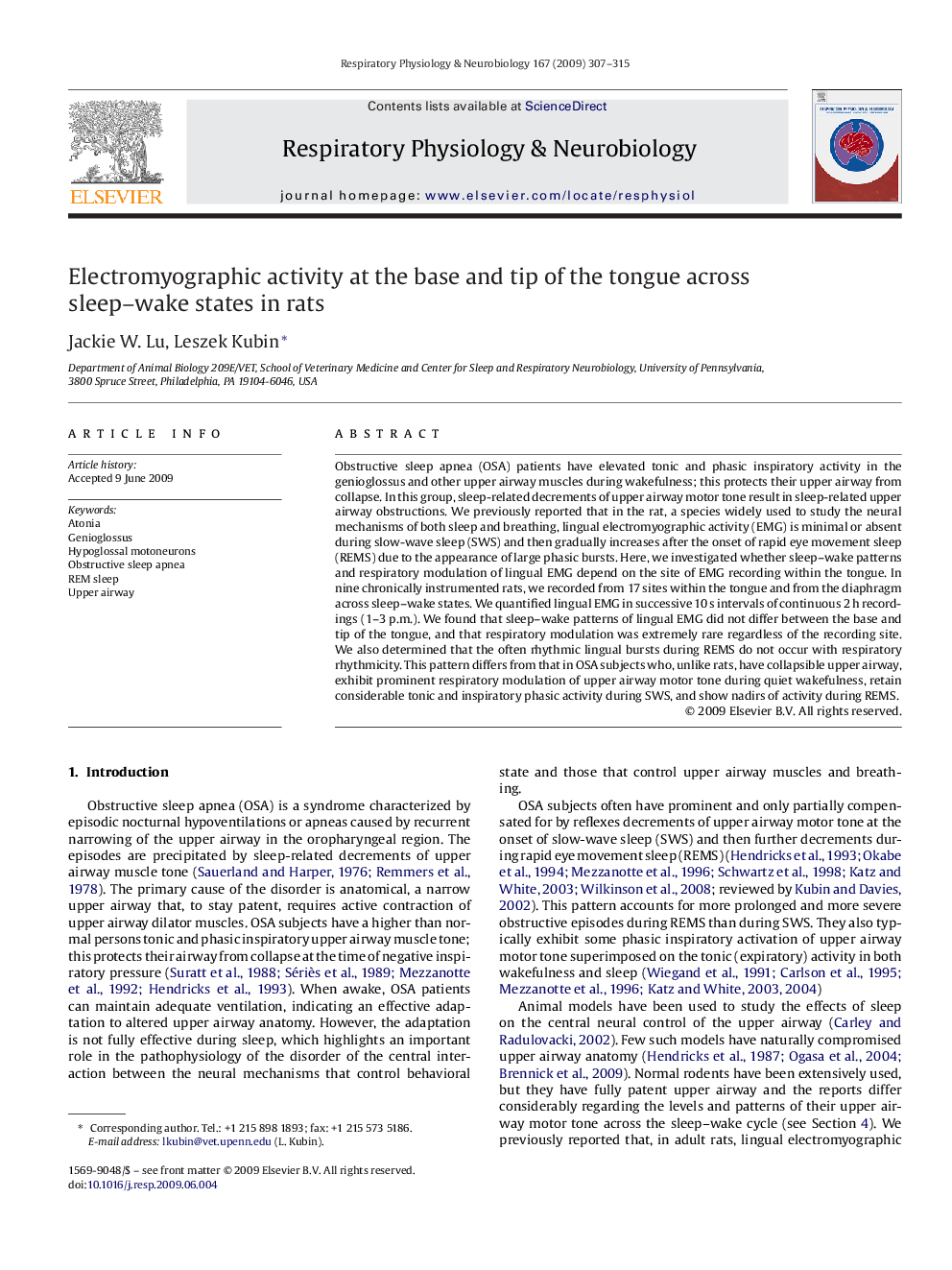| Article ID | Journal | Published Year | Pages | File Type |
|---|---|---|---|---|
| 2847900 | Respiratory Physiology & Neurobiology | 2009 | 9 Pages |
Obstructive sleep apnea (OSA) patients have elevated tonic and phasic inspiratory activity in the genioglossus and other upper airway muscles during wakefulness; this protects their upper airway from collapse. In this group, sleep-related decrements of upper airway motor tone result in sleep-related upper airway obstructions. We previously reported that in the rat, a species widely used to study the neural mechanisms of both sleep and breathing, lingual electromyographic activity (EMG) is minimal or absent during slow-wave sleep (SWS) and then gradually increases after the onset of rapid eye movement sleep (REMS) due to the appearance of large phasic bursts. Here, we investigated whether sleep–wake patterns and respiratory modulation of lingual EMG depend on the site of EMG recording within the tongue. In nine chronically instrumented rats, we recorded from 17 sites within the tongue and from the diaphragm across sleep–wake states. We quantified lingual EMG in successive 10 s intervals of continuous 2 h recordings (1–3 p.m.). We found that sleep–wake patterns of lingual EMG did not differ between the base and tip of the tongue, and that respiratory modulation was extremely rare regardless of the recording site. We also determined that the often rhythmic lingual bursts during REMS do not occur with respiratory rhythmicity. This pattern differs from that in OSA subjects who, unlike rats, have collapsible upper airway, exhibit prominent respiratory modulation of upper airway motor tone during quiet wakefulness, retain considerable tonic and inspiratory phasic activity during SWS, and show nadirs of activity during REMS.
